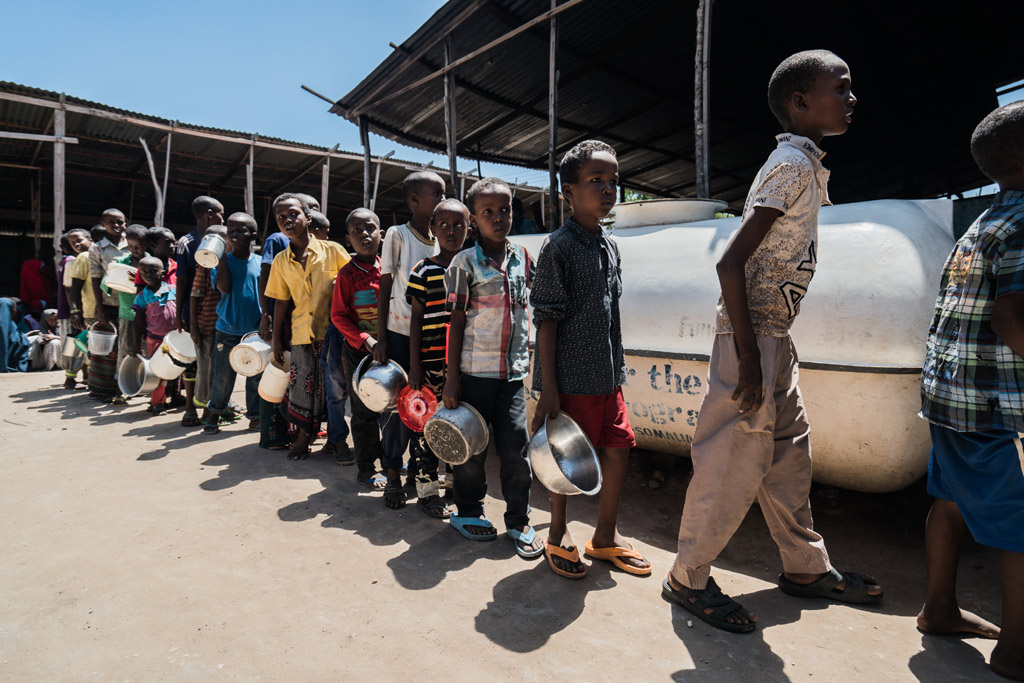Somalian humanitarian response plan
February 2, 2018 | Expert Insights

The 2018 Humanitarian Response Plan for the Somalian Drought and Famine crises was presented on the 30th of January to senior members of the Somali Government and the international community. It presents short and long term solutions to help recovery and resilience to the cyclical droughts.
Background
A turbulent nation, Syria has been plagued by anarchy since 1991 when Mohamad Siad Barre’s Military regime was overthrown, and the country fell to warring clans. UN peacekeeping missions failed through the 90s. The tentative government formed in 2000 ended when the two regions of Somaliland and Puntland broke away. Through the 2000s, the country struggled to fight against infiltrating militia loyal to the Islamist Courts, and later jihadist groups. In 2012, a formal parliament backed by the international community was finally established.
Despite internal conflict, the most disastrous incidents in Somalia are quite possibly the droughts it has suffered for the past 25 years, and the famines that result. The most recent of these was in 2016-2017, when rains failed for three successive seasons. Last January, the nation declared drought to be a national emergency, and managed to avert famine after a coordinated effort of the local government and international aid agencies through the 2017 Humanitarian Response Plan.
Despite this, it is estimated that displacement due to conflict and drought in 2017 was higher than it’s ever been, and that food security needs have nearly doubled from the five year average. Humanitarian Coordinator for Somalia, Peter de Clercq, stated “much must be done to eliminate the looming threat of famine in this country”. An estimate of 1.2 million children will be malnourished in 2018, a fifth of them life-threateningly so.
Analysis
The 2018 Humanitarian Response Plan launched on January 17th this year calls for 1.6 billion USD to help protect 5.4 million people.
Michael Keating, UN Secretary-General’s Special Representative for Somali told a security council briefing on the 24th of January, that the success of this year’s relief plan depends highly on 2 factors: the continued support of the international community; a stabilization and agreement on the details of the political power structure, particularly with regards to conflict resolution and reconciliation with Puntland and Somaliland, and addressing the Al-Shabaab.
On the 30th of January in the capital Mogadishu, the Humanitarian Response Plan was presented along with a Recovery and Resilience Framework (RRF) to senior members of the Somali Federal Government, as well as the international community, including high level officials from the UNDP, World Bank, EU, and the UN Emergency Relief Coordinator.
The purpose of the plan itself is to address both short term recovery from and long term resilience to drought: to tackle the root causes of the country’s vulnerability. In order to present a more informed and holistic plan, the Somalian Federal Government’s Ministry of Planning, Investment, and Economic Development also conducted a Drought Impact Needs Assessment (DINA) in partnership with over 180 experts. This needs assessment estimated the cost of RRF framework to be USD 1.77 billion.
The DINA and RRF inform the 2018 Plan.
Prime Minister Hassan Ali Khaire, who opened the event, said: “Somalia is turning over a new leaf in its history. Important and significant progress is being made on our peace- and state-building agenda. We are determined to overcome the challenges posed by recurring droughts that risk undermining these gains, and we count on our international partners to support us in this endeavour.”
This set the tone for further comments. Achim Steiner, Administrator of the UNDP, noted the fact that the famine had been averted in 2017, and emphasised on the need to continue and build on the progress made since the government’s 2012 establishment.
UN Emergency Relief Coordinator Mark Lowcock spoke of continued international support and cooperation between intergovernmental agencies and the local administration.
World Bank Senior Vice-President Mahmoud Mohieldin praised the joint launch and the increase in informed means of tackling the crisis. He referenced the “new way of working”- that is, the efforts made to integrate the work done by various governmental, non-governmental, and private sector bodies.
Assessment
Our assessment is that this Humanitarian Response Plan is informed by research and attempts to bring together developmental partners and state authorities. We believe that reinforcing the capacities of the formal institutions in the country will help minimise conflict, which is an important step towards building the country’s resilience to and breaking the current cycle of drought and famine.








Comments